Just how easy is it to drive a Toyota self-charging hybrid? Well, the short answer is ‘very’. Perhaps the question should be: ‘How easy is it to drive in a way that maximises the efficiency of its hybrid powertrain?’
Not that hard at all. A Toyota self-charging hybrid switches seamlessly between its petrol and electric power sources with little to no interaction from its driver, and in doing so it is both easy to drive and highly efficient. But if you want to make the most of its potential, then it is possible to eke out some incremental gains with a bit of extra knowledge and forethought.
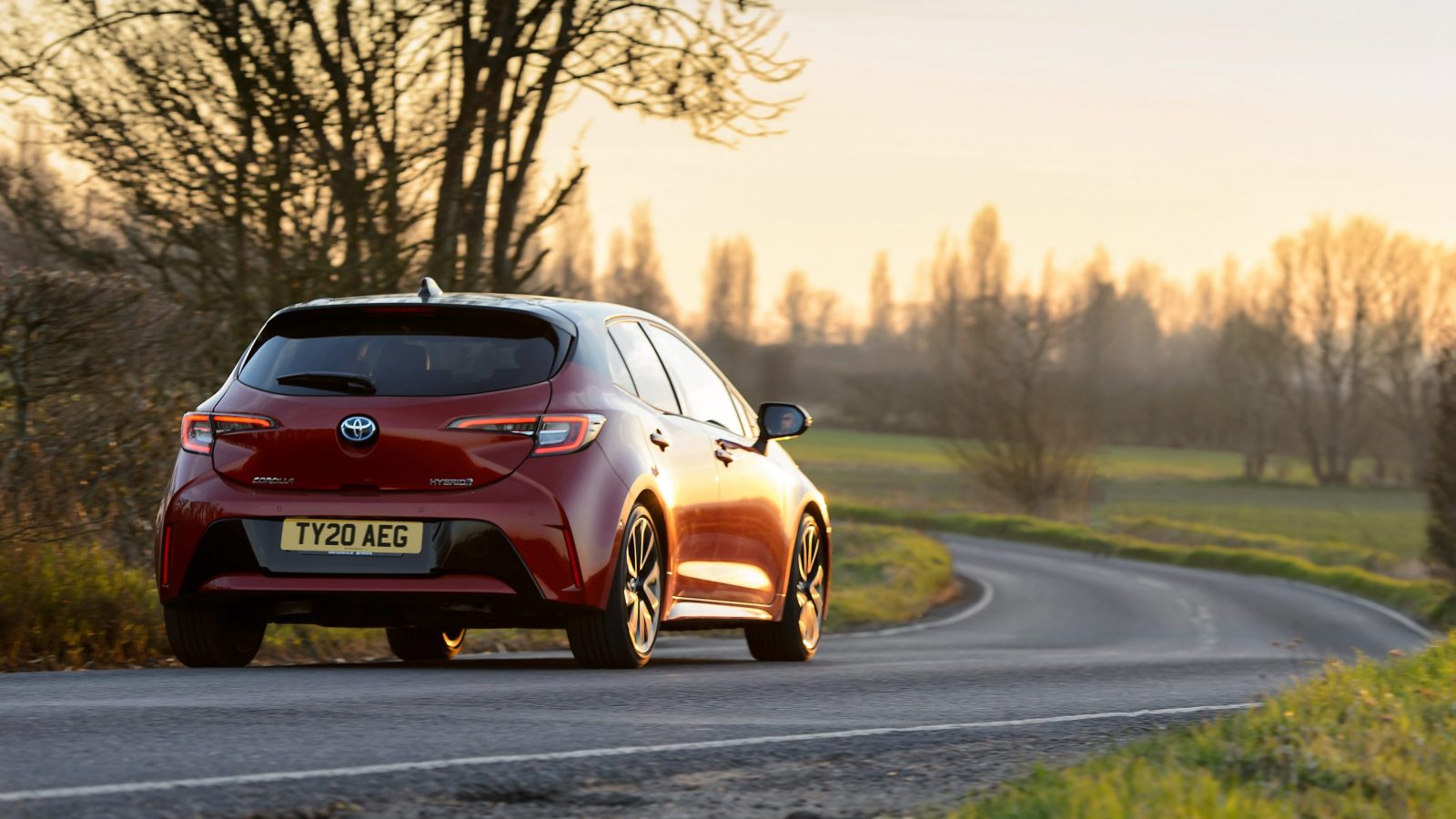
First, it helps to know a little about how Toyota’s self-charging hybrid system works. A reasonably conventional four-cylinder petrol engine is paired with a compact electric motor, which in turn draws its power from a compact battery pack. The two power sources can work separately or in tandem: at low speeds the electric motor can propel the car on its own but when more power is required the petrol motor joins in.
Learn more: Discover the Toyota Hybrid Range
The electric motor’s battery pack is recharged in two ways. During steady-state driving the system uses power from the engine not only to propel the car forward but also to recharge the battery. That, of course, sacrifices some power – and petrol – to make electricity rather than drive the car forward. However, any efficiency loss is offset by the gains made when running on electric power alone at low speeds or by adding electric assistance when the petrol engine is under load, for example when pulling away or accelerating hard.
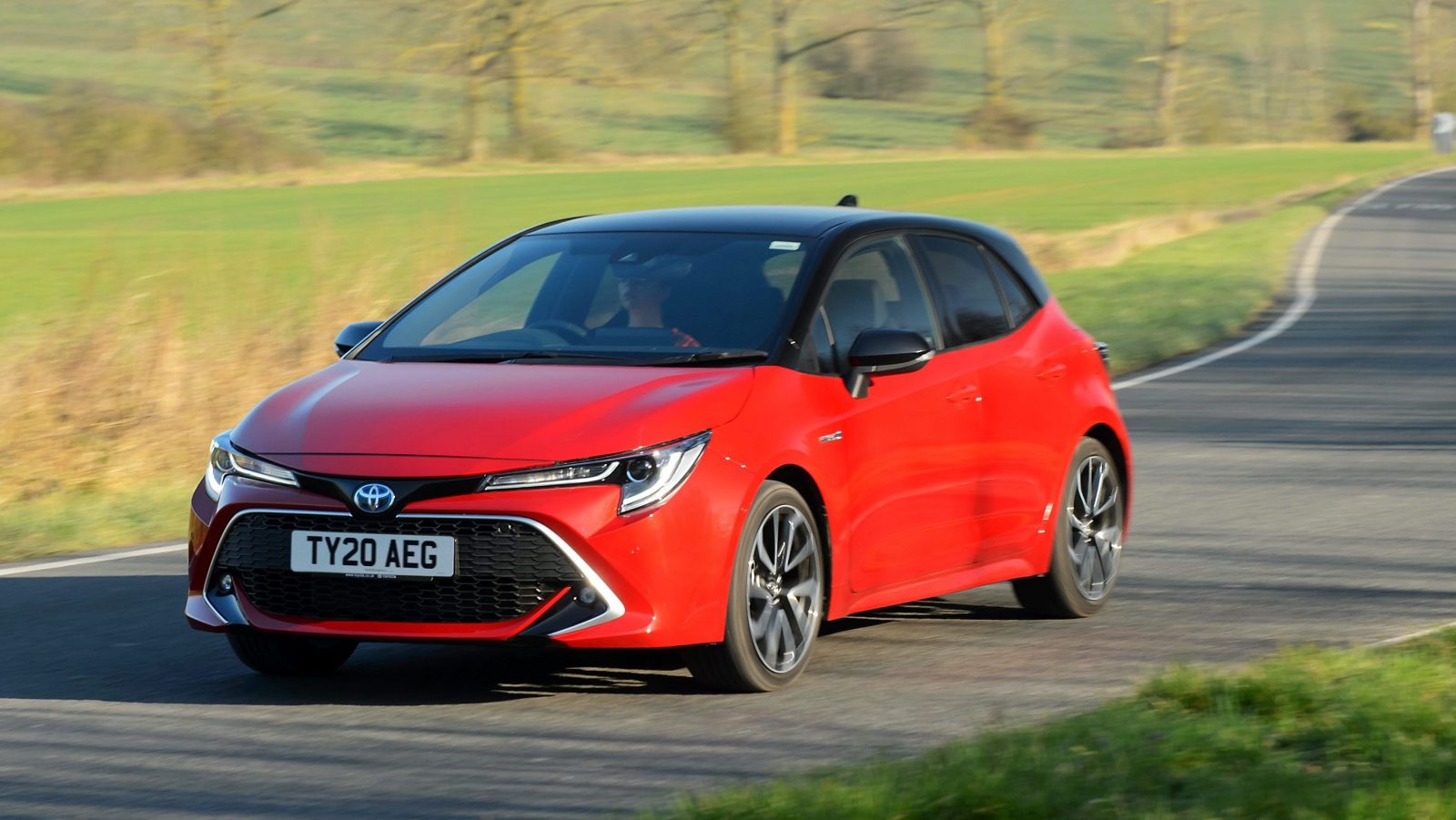
The battery pack is also recharged via regenerative braking, which takes energy from the car’s front wheels during braking and off-throttle deceleration and converts it into electricity for the electric motor’s battery pack. This happens automatically every time you brake and, to a lesser extent, when you lift off the accelerator pedal and the car loses speed of its own accord. This latter effect can be amplified by moving the powertrain’s transmission lever to the ‘B’ position. Do so and throttle-off deceleration is boosted quite noticeably.
So how does all that pan out in practice? We went for a drive in a Corolla Hatchback Hybrid to find out how to work with the car in order to make the most of the self-charging hybrid powertrain’s exceptional efficiency.
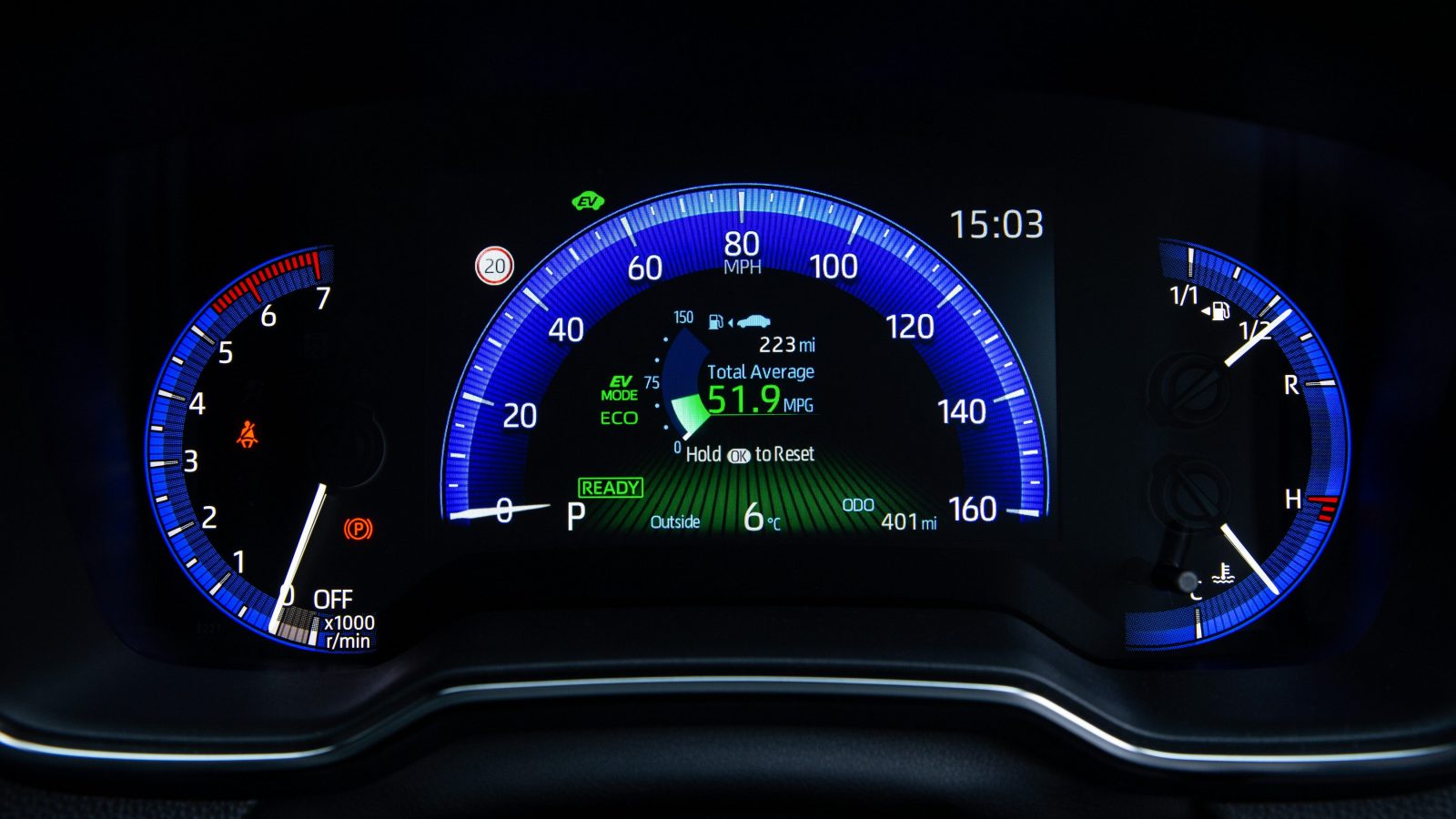
The Corolla Hatchback and Touring Sports are offered with the choice of two hybrid powertrains: a 120bhp 1.8-litre version and a sportier 178bhp 2.0-litre variant. Here, the Corolla we’re driving is using the 1.8-litre system, which is the fourth-generation incarnation of the petrol-electric powertrain first developed for the original Toyota Prius. The four-cylinder petrol engine and electric motor combine to produce 120bhp and 163Nm, the upshot of which, in efficiency terms, means it is capable of impressive fuel economy. Head to this page to read more about the full specifications of the Corolla Hatchback.
First, it should be noted that if you want to drive a car in the most fuel-efficient way, then much of what you need to do applies whatever you’re in. Minimising hard acceleration, keeping your overall speed down, maintaining a smooth, constant speed whenever possible and planning ahead to manage your interactions with other vehicles and conserve your car’s momentum are all fuel-saving essentials.
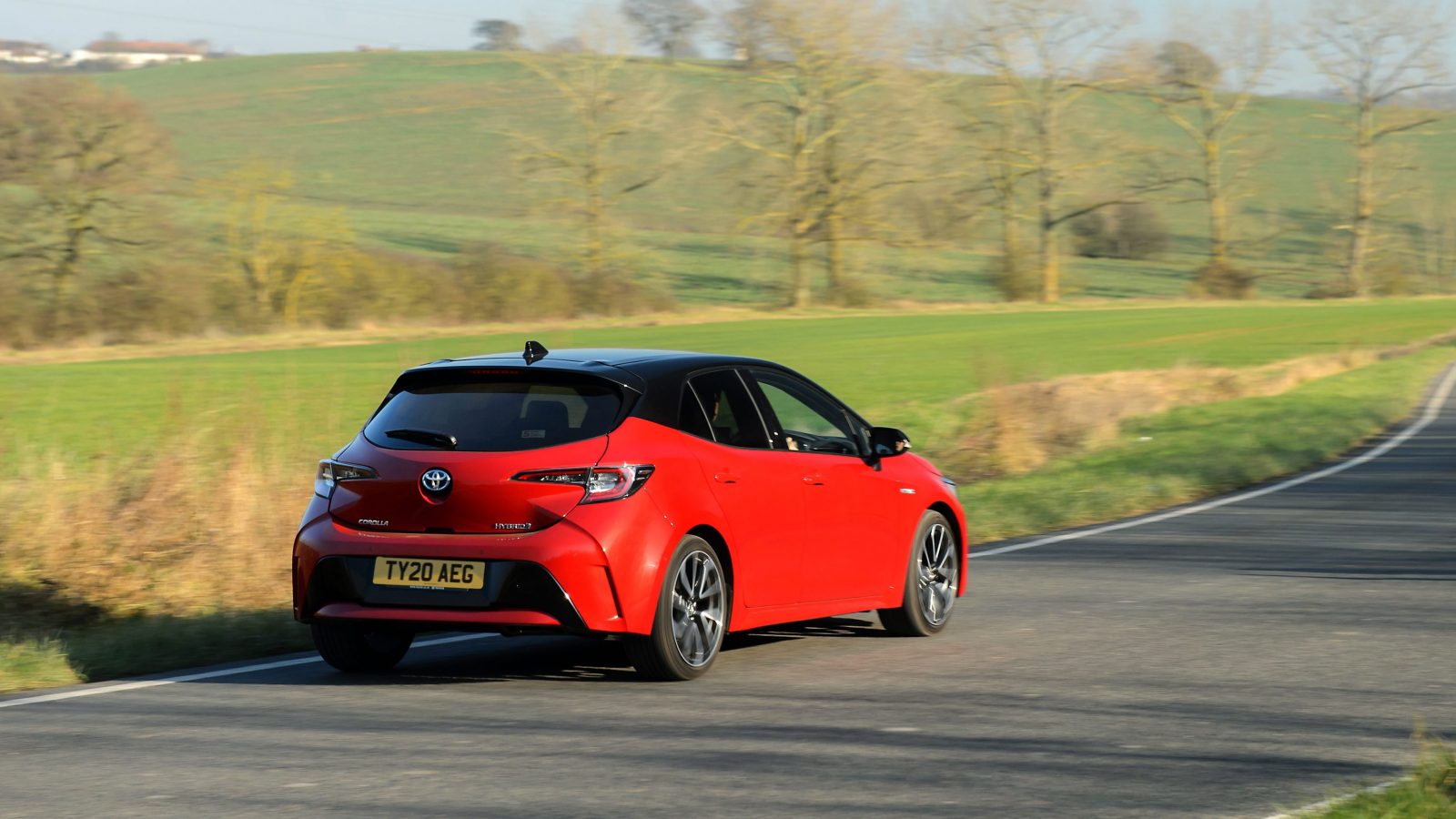
If you’ve ever tried to push a stationary car you’ll know they’re pretty heavy things. In fact, the car-pushing analogy is a useful one: it takes a lot of effort, and ideally more than one person, to push a stationary car, but once it’s underway much less effort is needed to keep it rolling. It is exactly this principle that makes a self-charging hybrid so efficient. It takes a lot of fuel to get a car moving from rest, but if that work can be carried out with an electric motor instead, or at least with its assistance, then the car immediately becomes much more efficient, especially in stop-start traffic.
With that firmly in mind, keeping an eye on the Corolla’s hybrid information display plays a useful role in managing the car’s power flow. As long as there’s sufficient charge in the battery, then most of the time it should be possible to pull away on electric power alone. If you’re light-footed enough on the throttle this is relatively easy, but if you want a bit of help, switching from the default ‘Normal’ driving mode to ‘Eco’ mode dulls the accelerator pedal’s response and helps to keep the system running on electric power.
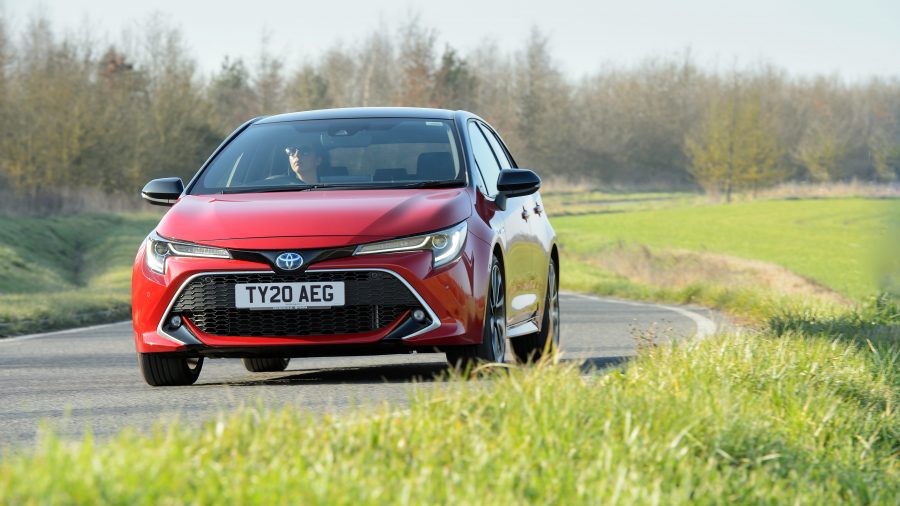
Do so and the Corolla glides away smoothly and serenely, its information display confirming that the flow of power to the wheels is coming solely from the battery. Ask a bit more of the powertrain and the petrol engine will join in – it announces itself with a distant ‘thrum’ but the actual transition to petrol-powered drive is as good as imperceptible; once again, the information display most obviously gives the game away.
If you want to drive on electric power for as long as possible, then switching to EV mode keeps the system drawing on the battery pack, rather than the fuel tank, for forward propulsion – providing there’s enough remaining charge. Once again a light-footed approach is required to keep you in EV mode for as long as the battery pack’s charge will allow. Advances in Toyota’s hybrid technology mean the Corolla Hybrid could be eased up to at least 50mph in EV mode on a flat road, although the battery’s capacity means such a party trick can’t be performed for long.
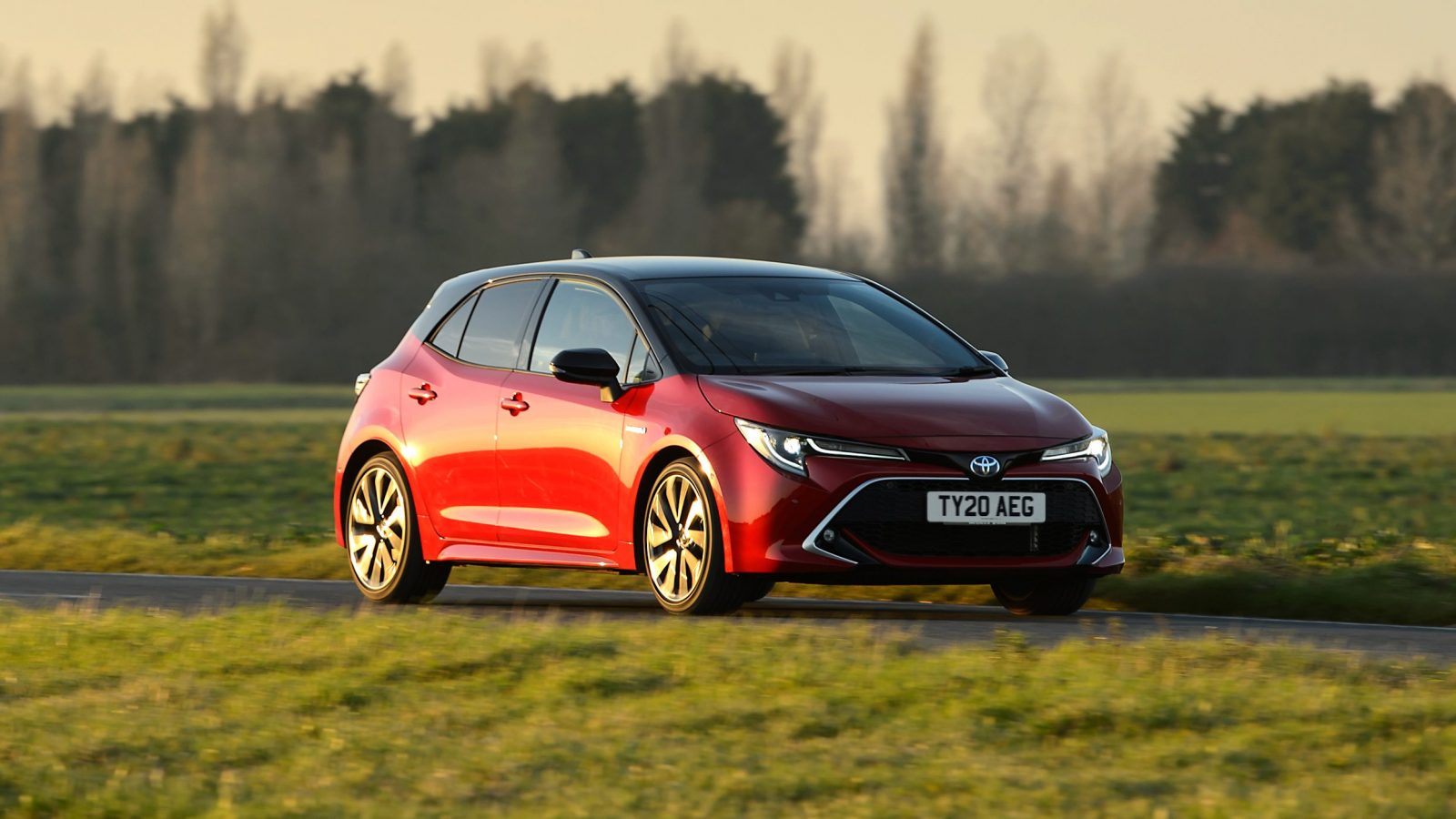
Maintaining your momentum is key to efficient progress, whatever drive mode you’re in. Fluctuations in speed sap energy, and while some of that deceleration can be recouped via the regenerative braking system, avoiding slowing in the first place, safety permitting, of course, is preferable. It’s here that the driver’s eyes and situational awareness play such a crucial role: reading the traffic flow and road conditions should take precedence over monitoring the power flow on your information display.
Being aware of how the regenerative braking system works can also reap rewards. Braking gently and early is better than hard and late, but you can also boost the regenerative effect by moving the transmission lever from ‘D’ to ‘B’. Doing so adds a markedly increased braking effect when you lift off the accelerator, and it can be used to surprisingly good effect when going down steep hills (what goes down must come back up, however, so anything you gain going down a steep hill is just money in the bank for getting back up it again later).
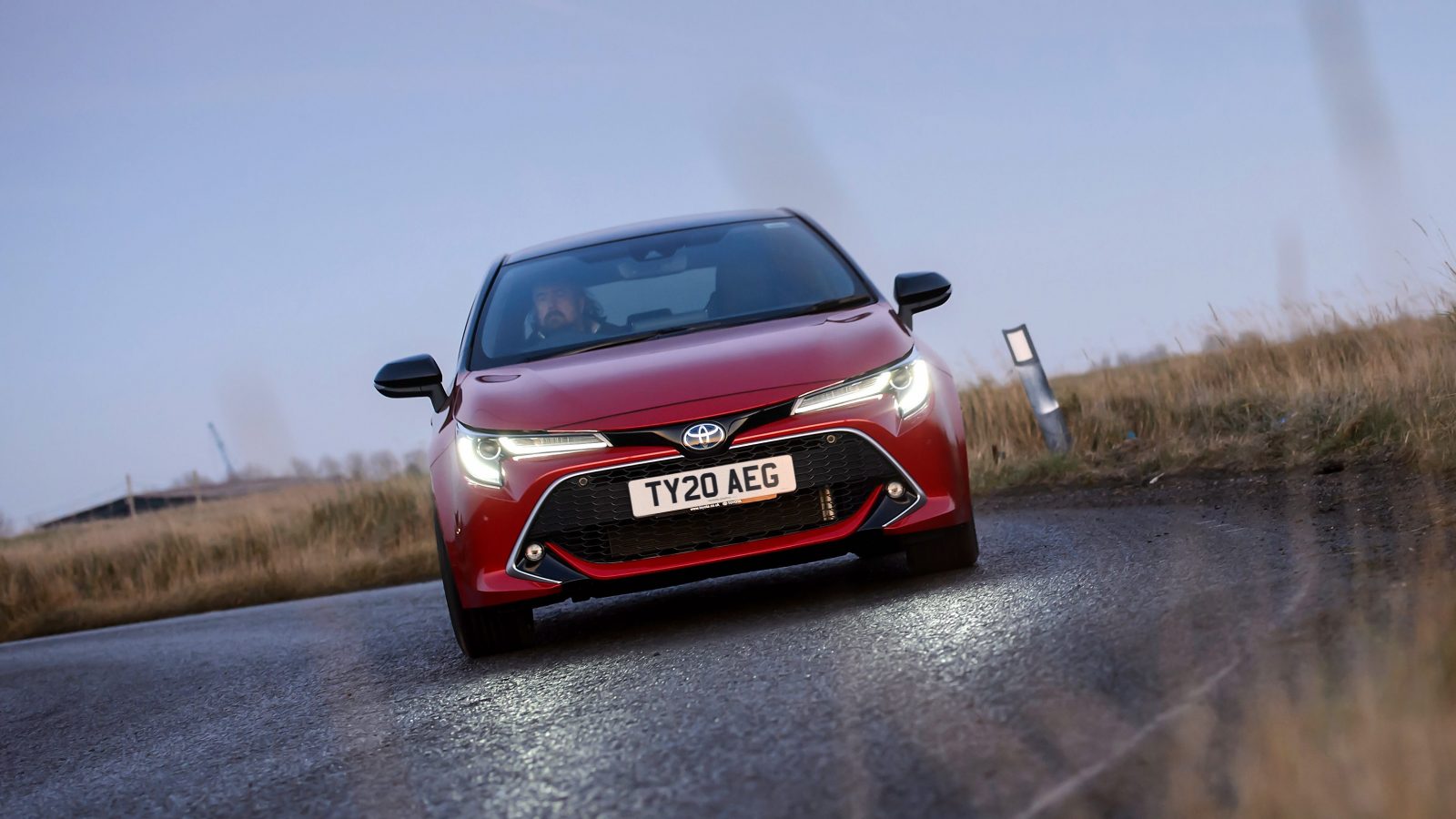
With a bit of practice selecting ‘B’ can regularly be used to harvest extra energy, but always remember to switch back to ‘D’ afterwards. Despite all this clever energy-harvesting technology, the Corolla’s brake pedal remains natural in its feel at all times and its stopping power is easy to modulate.
If you haven’t driven a self-charging hybrid before, then much of that might sound a little too complicated for your liking. But don’t worry, it’s perfectly possible to leave the hybrid system to its own devices and manage its own power flow. With familiarity, though, and the almost inevitable ‘drive greener’ mindset that driving a self-charging hybrid evokes, you’ll soon be looking to make the most of your Toyota’s fuel-efficient powertrain at every opportunity.
By Tim Dickson, motoring journalist and eco-driving specialist
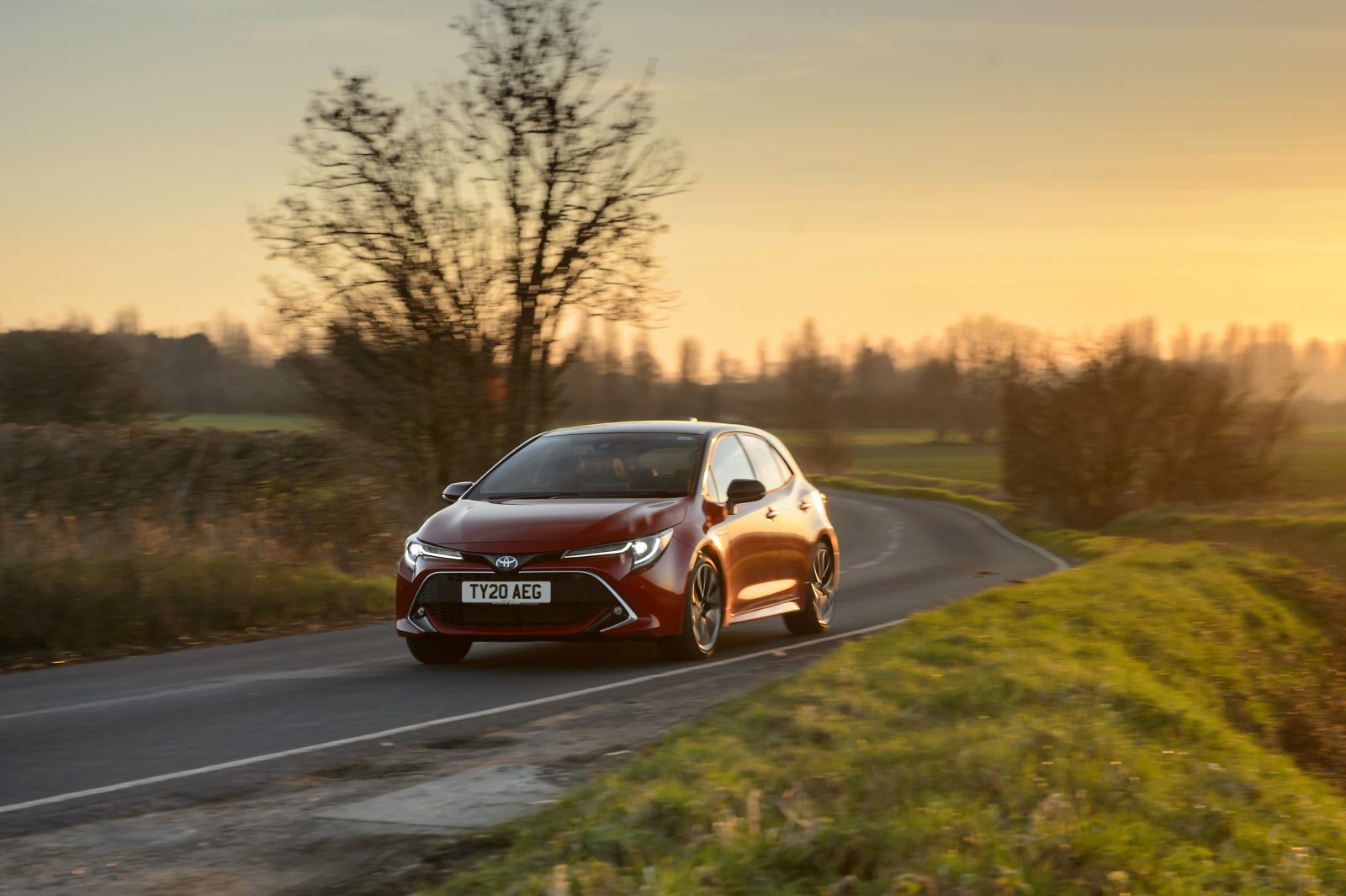




I want to buy a self charging Toyota
Hi Mohammed, thanks for your interest in our Hybrid range.
You can find all of our Hybrid options here: https://fal.cn/38BZW.
Thanks
Buy a proper electric car, or at least a partial hybrid. The only reason Toyota is trying to flog you 20yo tech is they are way behind anyone else on EVs.
Hello Peter,
You’ll find we actually have over 20 years experience with hybrid technology, and are currently on our fourth generation hybrid powertrain – with each generation seeing great improvements.
Not everybody is ready or able to make the switch to plug-in vehicles, therefore our hybrids offer an option for people that still want to do something to reduce their emissions.
To date, we have sold more than 17 million electrified vehicles, saving around 140 million tons of CO2.
Between 2010 to 2019, electrified technology has helped Toyota reduce its overall vehicle CO2 emissions globally by approximately 22%.
Furthermore, out first fully electric vehicle (the bZ4X) is going on sale next year.
Thanks.
I love my 62 plate Auris hybrid. I now own it outright with no payments, it’s free to tax, cheap to insure, and top brand tyres are only about £65 each.
I got just over 67 MPG on the last 450 miles of driving (it’s loving the warmer weather). I managed 88.7 MPG on a 32 mile trip a few weeks ago after getting lots of stop-start traffic which allowed me to travel for about 8 miles mostly on hybrid so I used almost no petrol. Overall it’s a fantastic car!
Hi Anton,
Great MPG! Great to hear from you and we wish you many more happy miles.
Thanks
Can we drive the hybrid on B only for long distances
Have just purchased one now
Hi Aysha,
Thanks for your comment.
B stands for ‘Engine Braking’. It is used when driving downhill.
It is not recommended to leave the car in position B for normal driving, mainly because you’d end up using more fuel than necessary.
Thanks.
I have just purchased a 21 Yaris Hybrid and have a couple of questions.
Can you move from D (drive mode) to B (Brake mode) whilst moving and if so at what speed.
The My Toyota app suggest I should register my Multimedia system but the system in my car does not appear to be there. I appreciate the car (UK) does not have sat nav.
Hi David,
You can change from Drive to Brake mode whilst stationary.
Furthermore, we would recommend contacting our dedicated multimedia team for further assistance with this.
You can contact them here – https://fal.cn/3eeaN.
Thanks.
Hi, My question was could I move from Drive (D) to Brake (B) whilst on the move and if so at what speed.
Regards,
David Grimshaw
Hi David,
We apologise for the confusion!
You can move from drive to brake at any speed.
Thanks.
Great info. I have a 2018 Prime. I am considering a 2021 or 2022 Prime. How do they compare?
Hi Larry,
We cannot comment on your particular model as it is not UK spec. Please contact Toyota in your area for further information.
Thanks,
Toyota UK
I own a 2011 1st gen Prius. It’s at 63K miles now and still drives like new. I have been getting very good mpg out of it as I have changed my driving style and techniques I use recently. My best so far is consistent 79.2 MPG. Mixed driving, some town and some urban. No motorway driving at all tho. Mainly 30,40,50 mph roads. I have one question please If I may?
As I have been testing different driving techniques and styles, I have recently made it a habit to try use all battery power before I accelerate hard enough for combustion engine to kick in and charge battery as I am moving along. Does depleting most of battery power down to critical levels effect it’s lifetime? i.e Accelerate soft enough to avoid using combustion engine before battery goes low and combustion engine kicks in to charge it or coasting and breaking softly to help charge battery back up?
Hi Erhan,
Thanks for your comment.
The batteries in our vehicles are designed to be there for the entirety of its lifetime.
Thanks.
I have just purchased a new 2.0 l Corolla Touring Sport mainly as it was the only estate car I could find made in the UK, it’s also my first Toyota. So far its great. I plan to keep it 10 years so at the beginning of this journey.
Hi Clive,
Congratulations on your new Corolla Touring Sports.
Thank you for your kind words, we wish you many more happy miles.
Thanks.
I’m hoping to aqire our very fist Hybrid, 12yr old Auris 44k ,fed up with the VW Diesel gate Skoda we’re replacing, we only do about 8500miles yr now being Retired this car seems a fair buy.
Provided its got full Toyota servicing or even the Hybrid charging side has been well maintained, would a local garage be able to to work on the Petrol side of this car, are we sensible or should it have been completely serviced by Toyota.
Hi Brian, thanks for your comment.
We would always recommend servicing at a Toyota Centre, they’re best equipped to deal with the systems. Although you can service at any garage desired.
Thanks,
Toyota UK
I have just purchased a new ToyotaYaris hybrid. We mostly drive for less than 20 miles a week & rarely make long journeys. How do we charge the hybrid battery under the back seat to keep the battery in good condition? We have a good trickle charger for the battery under the bonnet. Many thanks.
Hi Elizabeth, thanks for your question.
Please provide your Vehicle Registration so that we can look into this for you.
Thanks.
We would also like to see your comment on the question about keeping the batteries in good condition when doing very few miles per week. We have just purchased a 22 plate Corolla Sport Touring GR, our first hybrid, after running a Corolla Colour for 17 years and only doing 44.000 miles in all that time. In the last 3 years their was only 1,000 between MOT’s, how will this affect the batteries?
We look forward to a hopefully good comment.
Hi Dave, thanks for your question.
Firstly, congratulations on your new Corolla.
For Hybrids, it is recommended to place the vehicle into ‘ready’ mode for around 60 minutes each week. This will help to ensure the health of both the Hybrid and the 12v battery. In order to do this, all you need to do is press the ‘start’ button with your foot on the brake and the ‘ready’ light will show on the dashboard. You can then remove your foot but make sure to keep the vehicle in ‘P’ mode with the parking brake engaged. Remember to keep an eye on your vehicle at all times and do not leave it unattended.
Additionally, if you are leaving your car unattended for a few days, we would recommend using a solar powered intelligent charger or a trickle charger to maintain the charge in the battery.
Hope this helps.
Thanks.
Thank you for the prompt reply. If the vehicle was left unattended for 4/5 weeks a couple of times a year will this be detrimental to the hybrid battery’s. The reason I ask is, we have a motorhome and tend to go away for extended periods throughout the year, and on our old Corolla I just disconnected the start battery to stop drain, how would this affect the hybrid?
Hi Dave,
If the vehicle is not frequently being used, it does not give the 12v battery adequate time to recharge.
Before you leave to go away, we would recommend conducting a journey in your vehile so that the READY light will have been on and carrying out the necessary charging process before you leave it. This combined with regular maintenance by following your service schedule should mean your car will be okay to leave for a few weeks at a time.
However, as previously mentioned, if you are concerned about leaving it unattended for a longer period of time, you could consider using a solar powered intelligent charger or a trickle charger whilst you are away.
If you would like any more specific advice regarding your vehicle, we would recommend contacting your nearest Toyota Centre.
We hope this helps.
Thanks.